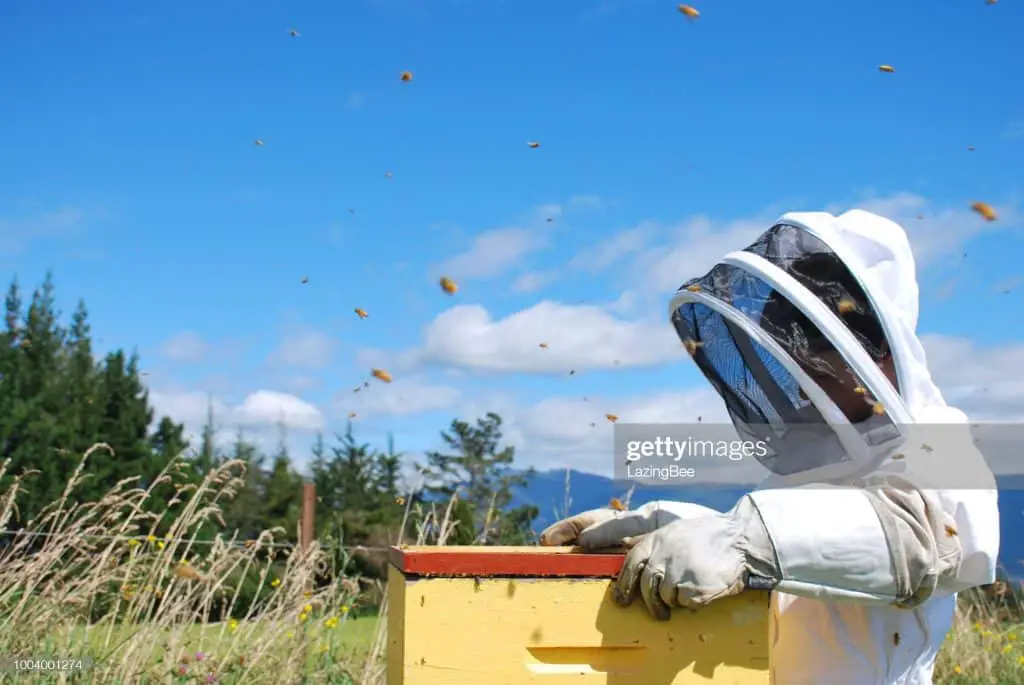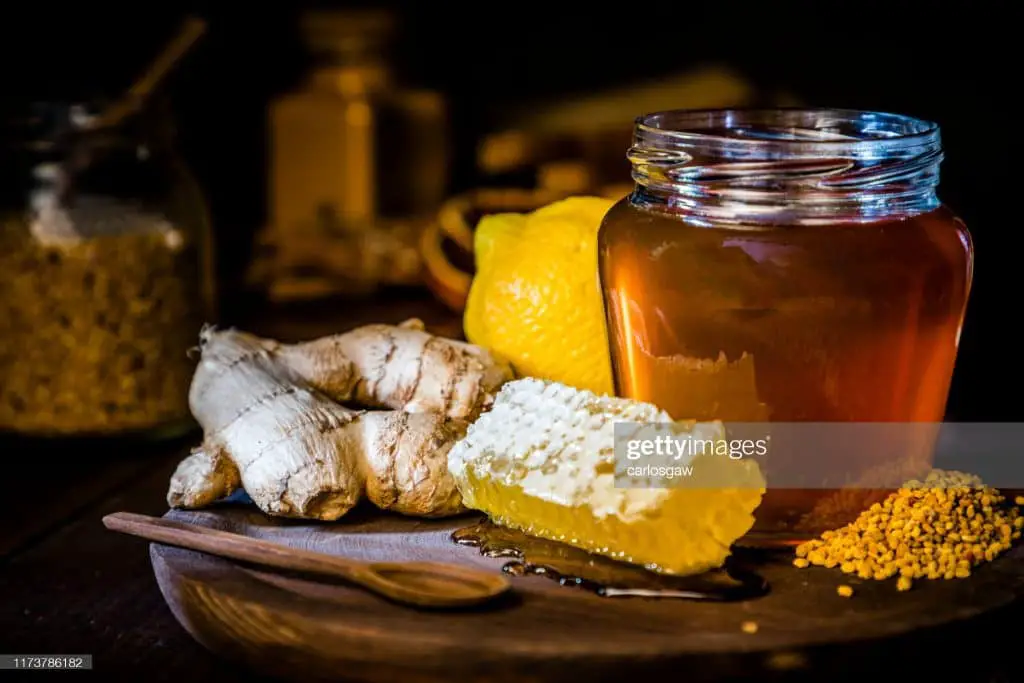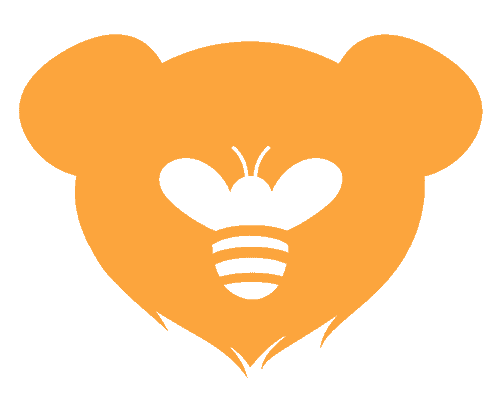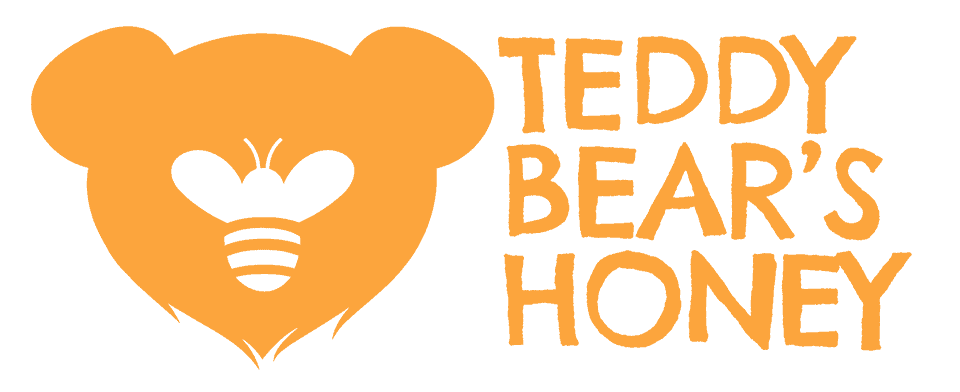If you’re considering starting your own beekeeping business, you might be wondering if it’s even a profitable business to be a part of. You’re in luck, because this article will answer all of your questions on this topic and more!
Beekeeping is very profitable for both those that do it part-time and full-time. Full time beekeepers earn a $48,980 salary on average ($24.50/hour), while part time beekeepers can earn up to $500 per hive.
There are many costs associated with beekeeping that you must take into consideration before starting your beekeeping business. That being said, the rewards of beekeeping are great, both for the individual and for the environment.
Read on to learn about how much profit you can make from beekeeping, how big your bee business needs to be to succeed, what products you can sell as part of your bee business, and more.
What Kind of Bees are Best for a New Beekeeper?
When most people think of beekeeping, they think of Western honey bees, or Apis mellifera. This is the best bee to keep for a new beekeeper, as Western honey bees are the primary species that beekeepers raise to produce honey and beeswax.
Since honey bees are domesticated insects that are often kept by beekeepers, it will be easy for you to find a source of these bees when starting your hives. Honey bees were selected as the primary honey-producing bee for several reasons.
Firstly, they produce large amounts of honey, with one hive producing around 60-100 lbs of honey per year. Secondly, they can survive in very cold weather, meaning they can be farmed in more temperate climates. Third, they are not as aggressive as other honey producing species and are easy to calm with smoke.
In short, Western honey bees produce a lot of honey, can survive in a lot of climates, and aren’t aggressive. These features make Western honey bees the best choice for a novice beekeeper.
How Much Money Can You Make from Beekeeping?
The amount of money that it is possible to make from beekeeping varies widely. It depends on how many beehives you have, where you live, and what types of products you derive from the wax and honey that your bees produce.
The honey market is projected to grow substantially through 2030, meaning that honey could be a great business to get into now. To determine how much money you can make from beekeeping, we’ll need to calculate both the startup costs and the income streams of beekeeping to get a profit value.
What are the Startup Costs of Beekeeping?
Depending upon whether beekeeping is a hobby or a full-time job, the startup costs of beekeeping can range from under $500 to $5,000. Here’s a breakdown of some beekeeping startup costs:
- Bees: $400
- Bee Food (sugar): $100
- Bee Hives: $270
- Beekeeping Suit: $250
- Gloves: $30
- Bee Smoker: $50
- Bee Smoker Fuel: $10
- Honey Extractor: $199
- Wax Melter: $80
- Pollen Trap: $35
- Land: Free to $150,000
Note: If you know any local beekeepers, they are usually very friendly people who are happy to help out other beekeepers with free advice, tools, and sometimes even equipment!
You also don’t need to buy all of these to start, but each of these tools makes the job easier and sometimes more fun.
There are several pieces of equipment and materials that you’ll need to buy to begin beekeeping. This includes hives, protective clothing, food, and of course the bees themselves. Read on for an estimate of beekeeping startup costs by category and in total.
Cost of Hives: $210 to Start

The best hive for a beginner beekeeper is the Langstroth hive, which doesn’t require any special permits to own. These hives have removable frames on which the bees will build their honeycombs, making honey extraction easy. It also makes it quite easy to check your bee hive for parasites, disease, or an aging queen who will need to be replaced.
Langstroth hives are essentially stackable boxes with internal frames and entrances at the bottoms for bees to fly in and out of. You can customize your Langstroth hive by buying the appropriate number of boxes and stacking them however high you like. Each box runs about $70, and you’ll want at least two or three to start, which puts this startup cost at about $210 for a three-box Langstroth hive.
It’s important to note that you’ll need to allow each of your colonies at least two Langstroth box sections to store their overwintering food. This means that you cannot harvest honey until the bees have completely filled two boxes with honeycomb and honey. If you harvest their overwintering food, your bees will starve during the winter and you will lose your colony. So, the more honey you want to harvest, the more boxes and bees you’ll need to keep. This is why you need at minimum two boxes to keep bees, and ideally more if you plan to harvest honey from them.
Cost of Equipment: $1,120 to Start

For your equipment, the first and most important thing to purchase is protective clothing so that you can avoid being stung by your bees. You’ll want a beekeeping suit, veil, and gloves. To get a high quality, very protective beekeeping suit with a veil, you’ll spend about $250. Gloves are about $30, putting the cost of clothing at $280.
In addition, you’ll need to have a smoker in case your bees become aggressive or agitated at any point in time. Smokers are about $50, and wood pellet fuel runs about $10 for 5 lbs depending on where you buy it, which makes your total smoker startup cost about $60.
You’ll also need a few other things to make the most profit from your beehives: a honey extractor, a wax melter, a pollen trap, and a propolis trap. Combined, these tools add up to about $780.
Cost of Land: Highly Variable
In order to keep bees healthy and producing honey and other products, you need to live in an area where there are widely available flowers and plants that the bees can feed on. If you live in an urban area, beekeeping can be more tricky than if you live in a more rural, agricultural part of the country. A survey of national beekeepers found that one colony of bees most often needs from 2-5 acres of land, meaning that if you have multiple colonies of bees you’ll need quite a lot of land to feed them all.
This cost is obviously quite variable, because if you already own a large amount of land full of plants, your cost will be $0. But if you are trying to buy or rent land on which to start your farm, the costs can be incredibly high. This is the determining factor in your startup cost, and is difficult to estimate overall because every situation is so different.
Cost of Food to Raise Your New Bees: $140 to Start
When you buy new bees, you’ll need to feed them for the first few weeks that you have them to help them establish their hive as they become familiar with their surroundings and learn to forage for nectar and pollen. This is especially true if purchasing package bees rather than nucs, which are both outlined below.
While it may be tempting to feed your new bees honey, you should not do this as it could introduce disease into your new colony.
Typically, new bees are fed sugar water, or simple syrup, a 1:1 solution of cane sugar and water. Sugar itself is relatively cheap and can be found in most people’s houses, but you’ll need gallons upon gallons of sugar water to feed your bees. So plan to spend at least $100 on sugar to start.
Additionally, you’ll need a feeder to put the sugar water in so that your bees can access it. While it’s possible to make home-made bee feeders, it’s best to just buy a professional one if you are a new beekeeper. These run anywhere from $20-$40.
Cost of Bees Themselves: $400

There are two basic options when it comes to buying bees: package bees or “nucs,” which is short for nucleus hives. Read on for an overview of each option.
Package Bees
When you buy package bees, you typically get a queen bee and multiple worker bees. The queen bee will be packed in a cage separated from the worker bees, and you’ll need to introduce her to her workers because they will not naturally know each other or want to work together.
Typically, your queen will come in a cage with food material holding it closed, which the workers will eat through over time, allowing them to get to know the queen before she is released from her cage. This is the most common way of introducing a queen to her packaged workers.
Many package bees come with a feeder filled with simple syrup, or sugar dissolved in water. If your package bees do not come with this feeder, you’ll need to purchase one separately as outlined in the previous section. You can buy package bees for about $200. Package bees are the cheaper option here because they are not established hives, and are typically younger bees that will need more help in developing their colony.
Nucleus Hive, or “Nuc”
Nucs are essentially mini-hives that have already established their honey-making and mating behaviors. Typically, you’ll get five frames within a box, which will contain already-built honeycomb, already-made honey, baby bees, a queen bee, and the worker bees themselves.
This method of buying bees is excellent for new beekeepers because it gives you a jump start on establishing your hive. Because the bees already know each other and have developed their hive together, they’ll be more ready to begin foraging and honey-production immediately after you introduce them to their new environment.
However, if you already have a few established hives and are looking to add more bees to your collection, this method can be slightly more risky because introducing new honeycomb to your existing hives can spread disease and pests if the new honeycomb was not purchased from a reliable seller. Therefore, it’s essential to buy nucs from a reputable vendor and, if possible, inspect them for disease before purchasing.
You can buy nucs in plastic bins to be transferred to existing Langstroth hives for about $270, while you can buy nucs that are already established in Langstroth hives for about $400. If you’re a new beekeeper, buying a nuc in an existing Langstroth hive is your simplest option, so we’ll use $400 as the estimate for buying new bees.
The Total Startup Cost for Beekeeping
Now that we’ve covered the basic supplies that you’ll need to start your beekeeping business, we can give you the estimated startup cost. It comes out to a little more than $1,870 for a small collection of bees, with the cost increasing if you want to have multiple colonies or many beehives.
What Products Can Bees Produce That You Can Sell?

Bees produce many things that beekeepers can sell to continue their job. For example, beekeepers commonly sell honey, wax, pollen, and even propolis.
There are many ways to make money off of bees. The obvious one is to sell the products that the bees produce, including honey, wax, pollen, and propolis. There is a market for each of these products, and by selling them you can increase the profitability of your beehives. One option that a new beekeeper might not initially think of is to sell pollination services to local farmers. If you live in a highly agricultural area, you can “rent” your bees out to farmers who need their crops pollinated.
See below for a breakdown of income streams from beekeeping, per colony, per year.
Income from Honey: $550
Honey is the most obvious stream of income for a new beekeeper. In 2018, the average honey yield per colony was about 55 lbs. It’s essential to note that bee colonies can need anywhere from 40 to 90 lbs of honey in order to survive winter, so you cannot harvest all the honey from a hive if you want it to survive another year. However, there is typically surplus honey that you can harvest, especially if you keep five or more hive boxes and a few colonies of bees.
Honey prices vary drastically depending on your region, but a safe bet for the retail price of one pound of raw, organic honey is about $10. If you get about 55 lbs of excess honey per year, that makes you $550 per year, per colony.
Income from Wax: >$10
Beeswax is a substance that the bees use to seal their honey into their honeycombs. As such, the beeswax production depends on the honey production. Most beehives produce at most one pound of wax per 50 pounds of honey.
Beeswax can be used for a variety of cosmetics, as well as for making candles. While beeswax itself is only worth about $10 per pound, setting the profit from beeswax fairly low, you can increase the profit margin of beeswax by turning it into salves and lotions, or even candles before you sell it.
Income from Pollen: $500
Using a pollen trap, you can harvest pollen from your beehive in addition to your honey and wax. Bees need about 33-121 pounds of pollen annually per colony to feed their larvae, but they can collect as much as 125 pounds of pollen per year. So if their pollen intake is somewhat low, or if they are fed a pollen substitute in the colder months, you can harvest as much as 92 pounds of pollen from their hives!
Because bee pollen can be sold for up to $25 per pound, you can make up to a whopping $2,300 if you supplement your bees with pollen substitutes during colder months and harvest the pollen they collect during the summer with a pollen trap. Of course, this is variable, so we’ll set a much more conservative estimate and say that you are able to harvest 25 pounds of pollen per year at $20 a pound, making you $500 per year.
Income from Propolis: $160
Propolis, otherwise known as “bee glue,” is a substance that bees use to seal up holes in their hives. Propolis has strong antimicrobial features, and is valued for its health benefits. You can use a propolis trap to harvest propolis from your bees, especially in the early fall when they are sealing up all the holes in preparation for winter.
The amount of propolis you can gather from one hive varies from 0.33 pounds to 2.2 lbs. Propolis sells for up to $10 per ounce online, meaning that if you harvest one pound of propolis from your colony, you can sell it for around $160.
Income from Pollination Services: >$50 per colony
You can charge anywhere from $50 to $200 to allow farmers to use your bees as pollinators for their crops. Each colony is worth about this much, so if you have multiple colonies, you can rent them out to multiple farmers and make even more profit. This is easy money, as all you have to do is move your bees and beehives to a farmer’s land for the growing season. This method of income does not counteract your other streams of revenue, as your bees will still produce harvestable honey, wax, pollen, and propolis.
Other Potential Income: $300
You can also, of course, sell the bees themselves. As your colonies build themselves up, you can begin to sell package bees or nucs in the spring when your colonies are growing. You can also gather and harvest extra queens for more income. You can sell package bees for around $100, nucs for around $150, and queens for anywhere from $50 to $1,500. A lower end estimate would be about $300 if selling bees themselves.
Total Potential Annual Income from Beekeeping
As you can see in the above sections, income from beekeeping can be quite variable depending on what products you are selling and how many colonies of bees you have. But assuming you are a beginner with one colony living in a few Langstroth hives and you do not sell any of your bees in the spring, you can expect income of about $1,270 per year, per colony. This number depends on proper marketing and outreach as outlined below.
As you might have noticed, the annual income from beekeeping falls short of the startup costs by about $600. It’s important that you know this before starting your beekeeping business, and that you understand that a small beekeeping business brings in far less profit than a larger one.
However, that being said, once your business has paid for its startup costs, beekeeping has a relatively low overhead cost and therefore becomes more and more profitable as you grow your business and colonies.
Where Can You Sell Bee Products?
In order to make money from beekeeping, it is essential that you market and sell your products appropriately. You should reach out to local farmers’ markets and stores to see if you can sell your products on their shelves or have your own stand. You can also open your own farm stand, although this will probably bring you less business than attending a local farmers’ market.
Another great market for bee products is Etsy.com, where you can sell your products to independent buyers. Setting up your Etsy store is easy, and you can sell almost all of your bee products there. From a quick survey of Etsy prices, I see honey selling at $12 per pound, propolis selling at about $85 per 0.22 pounds, bee pollen selling for $2 per ounce, and beeswax selling for $10 per pound.
Your profitability is greatly dependent on your marketing skills. If you are not savvy with computers, or do not go out of your way to find stores and farmers’ markets to sell your products at, you’ll struggle to make money. If this is the case, it might even be worth hiring someone to be in charge of marketing and online sales for you, or finding a family member who is interested in doing that kind of work.
Conclusion
I hope this article has helped give you a sense of the profitability of beekeeping. Even if it does not pull in much profit for a smaller operation in the first few years, as your farm grows, your profits will increase. Additionally, beekeeping is simply rewarding for both you and the environment, and keeping bees is a great way to have your garden looking great and being pollinated during the growing season. So even when beekeeping is not as financially profitable, it is extremely profitable for you and the environment regarless of money.

